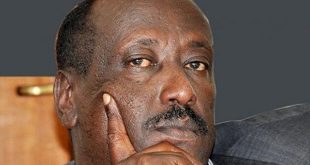
By Prabhjot Singh
Ensuring that people seek care for other ailments amidst fear of clinicians is a challenge
In Sub-Saharan Africa, any child with a fever should receive immediate medical care to prevent death from malaria or pneumonia. But, as panic about the spread of Ebola grips Liberia – as well as Sierra Leone, Guinea, Nigeria, and Senegal – people there are increasingly associating clinicians and health-care facilities with exposure to the disease. Ensuring that they continue to seek care when they need it requires improvements to frontline clinics and investment in locally hired community health workers (CHWs) to reach the vulnerable in their homes.
To be sure, the shortcomings of Liberia’s health-care system long preceded the Ebola outbreak, with roughly 28% of the country’s four million citizens lacking access to adequate facilities. The 2003 Accra Comprehensive Peace Agreement may have ended years of civil war, but it left the country with only 51 doctors and decimated infrastructure.
With very few qualified health-care professionals, repairing the health-care system demands more than building new hospitals and clinics across Liberia’s densely rain-forested countryside. Fortunately, the government, like others in Sub-Saharan Africa, recognises the need to invest in training CHWs in rural counties to treat diarrhea, pneumonia, and malaria – the three major causes of death in children under five years old.
By definition, CHWs have deep relationships with their communities; including traditional healers, which enables them to help the formal health-care system calibrate its approach. At the same time, mobile technologies facilitate quality control and supervision, while providing CHWs with expert clinical support.
In March, Liberia’s health ministry, in collaboration with United Nations agencies, USAID, local and international NGOs, and private companies, created a comprehensive scale-up plan for the country’s community-health program. But Ebola struck soon after, shifting attention to clinics, quarantines, and reports of cures.
The World Health Organization (WHO) has played a central role in coordinating the international response along with national governments, aid groups like Doctors Without Borders, and the US Centers for Disease Control and Prevention (CDC). With the epidemic still growing, the public-health community is attempting to mount an effective response, using a $100 million funding boost to deploy clinicians, epidemiologists, and other experts.
To put this in context, the Liberian plan unveiled in March estimated that a national CHW network would cost some $20 million annually. To be sure, investments in CHWs should not come at the expense of critical public-health measures to slow the spread of Ebola or support for frontline clinics. But without continued investment in CHWs, whose costs are modest compared to those of traditional health-care systems, it will be difficult for the international community and national governments to stop the spread – and prevent the recurrence – of Ebola and other devastating epidemics.
There are two basic approaches to building a health-care system. One has hospitals at the center and clinics radiating outward; the other is founded on social networks and mobilised by CHWs. If the first is too rigid, diseases and their social context evolve beyond its means. If the second is too flexible, the ability to carry out technically complex work is compromised.
Striking the right balance is particularly challenging in areas where access is limited or trust is lacking. Doing so in the midst of an epidemic is even more complicated, owing to the social dimension of epidemics. In other words, how people respond when a child or family member falls ill is shaped by their friends’ and neighbors’ experiences, the availability of health-care services, and the community’s perception of those services; this response, in turn, determines how and to what degree the disease will spread.
As a CDC expert explained, CHWs are the key to stopping Ebola, because anybody who shows symptoms of the disease becomes a “suspected patient,” all of whose contacts must be followed for another three weeks. “Every day, except Sunday, the workers report their findings to a supervisor.”
One organisation, Last Mile Health, has built a network of 300 CHWs that serves 30,000 patients, providing access to basic clinics even in places like hard-to-reach Konobo, Liberia. The organisation’s hybrid structure is capable of addressing regular challenges, while retaining the flexibility to respond to extraordinary developments.
As the rainy season approaches, threatening to facilitate the emergence of multiple epidemics that will overwhelm the health-care system’s capabilities, the need to mobilise, train, and equip citizens to respond has become even more urgent. This demands a combination of targeted development aid, domestic investment, expert support, and on-the-ground perspectives from Sub-Saharan countries that have successfully scaled up CHW networks.
The same is true for all of the countries with active Ebola cases. Indeed, buttressed by the organisations behind the One Million CHWs campaign, these countries are already working to scale up CHWs. But they need more support, and international agencies and development banks remain too focused on containing the Ebola epidemic to offer the needed backing.
International organisations must recognise that they do not have to choose between supporting traditional health-care investments and emergency-response efforts. Long-term investment in credible health-care systems is the only way to head off future epidemics. Otherwise, Sub-Saharan Africa’s people will forever struggle to overcome avoidable health crises.
****
Prabhjot Singh, a professor of international and public affairs at Columbia University, is Director of Systems Design at the Earth Institute and Chair of the One Million Community Health Worker Campaign in Sub-Saharan Africa.
 The Independent Uganda: You get the Truth we Pay the Price
The Independent Uganda: You get the Truth we Pay the Price


